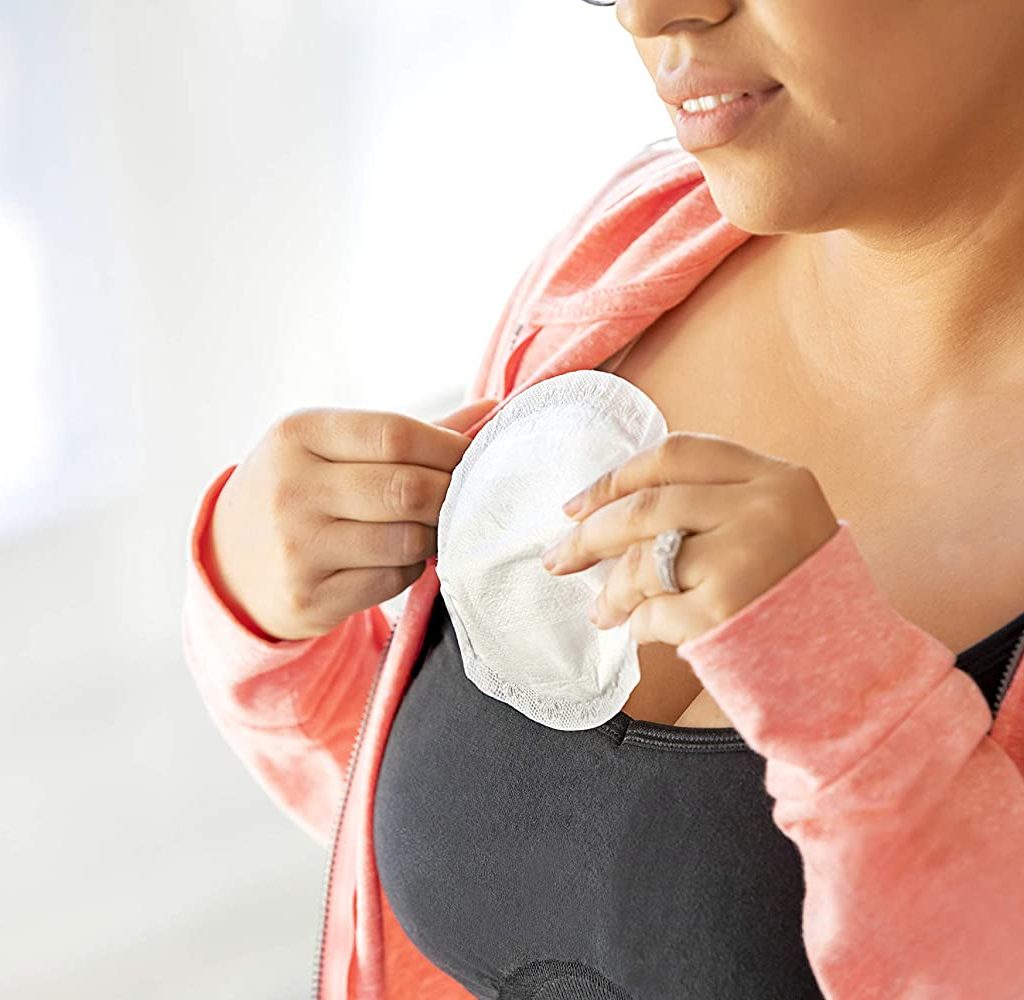Breastfeeding comes with so many accessories in the modern world, but they’re all there to help. They’re not meant to overwhelm or add to a long list of things to buy, even though it can feel like it. Between breast pumps, nursing pads, breastfeeding pillows, milk storage bags, and nipple creams, it’s a lot to take in and consider. Are nursing pads a must-have registry item or can you do without them? What is a nursing pad, what are they for, and what kind should you get? Here’s our ultimate guide.
What is a nursing pad? A nursing pad is a small piece of material to put up to a nipple of lactating person to catch the extra drips of milk in between feedings. They might also be called breast pads. They are absorbent and usually meant to keep leaks off of clothing, somewhat like a pad for menstruation. Some other types of nursing pads are meant to soothe sore nipples instead of catching leaks.

Why and when would I need a nursing pad?
- In the early days and weeks of breastfeeding, nipples may leak breastmilk at times when you’re not trying to get them to.
- If you don’t nurse for a while and your breasts get very full, some milk might leak out.
- Leaks could be triggered by environmental factors. For example, if something like a crying baby triggers a letdown, you might also leak.
- Wear a nursing pad at night. Nursing pads are very helpful while you sleep since the length of time without feeding and the possibility of squeezing your breast in certain sleep positions mean that you can have nighttime leaks.
How to wear nursing pads
Luckily, using nursing pads is quite simple, and better yet, you have different designs to choose from that are useful for daytime and at night.
Step 1: A nursing pad is put inside your bra between the bra and your nipple. Most pads need to be used with a bra to stay in place. There are nighttime nursing bras that can be used to put pads in overnight.
Step 2: There might be an adhesive side of the pad that makes it stick to the bra. Some nursing bras may have pockets to slip pads into. It depends on your type of pad and your bra.

What are the different types of nursing pads?
The most common types of nursing pads are disposable and reusable, both meant to absorb leaks.
Disposable nursing pads
For convenience, you can try the disposable option. Disposable nursing pads are for one-time use and are thrown in the trash after one wear. They are often soft and have some adhesive on one side, pretty similar to a panty liner.
Reusable nursing pads
You can also try nursing pads that can be reused. Reusable nursing pads can be washed after each use and reused instead of thrown away. They don’t typically have an adhesive. Bamboo is a popular material for reusable nursing pads.
For choosing between these two options, check out our guide to disposable vs. washable nursing pads.
There are other varieties to try as well. For instance, silicone nursing pads are not meant to absorb leaks, they are meant to prevent leaks. With these, the adhesive goes over the breast instead of on a bra, and they stick right to the skin. They’re usually used for times when you are going out (working, socializing) or when you don’t want to wear a bra (swimming, relaxing). They should be used sparingly for special occasions since they are not breathable and cause a risk of thrush, clogged ducts, and other issues.
Hydrogel nursing pads are specifically used for soothing nipples that are cracked or sore. They have a cooling effect and keep clothing from rubbing on sensitive nipples. These are best used in the earliest days of breastfeeding when nipples can be raw. Like silicone pads, they stick directly to skin and are not breathable.
How often should I change my nursing pad?
When using a leak-absorbing pad, you don’t want to keep moisture around the nipple for extended periods of time. If you create a moist environment, bacteria can grow and cause infection.
How often you change a pad depends on how much you’re leaking. If the pad is still dry, there’s no issue in leaving it there. Once it becomes wet, change it as soon as possible.
Some pads have layers that help keep the outer layer dry while the moisture is trapped inside, but general guidance is to change a pad as soon as it is wet.
Also, you might need to change the pad at some point during the night. The longer you sleep with a wet pad against your nipple, the greater the chance of infection.
The goal is to protect your clothing, bedding, and skin from getting milk on them. Therefore, if you are constantly leaking heavily or trying to get some sleep, just change pads as often as you can.
Are there any downsides to using nursing pads?
By keeping wet fabric against your nipple, it may create an environment for yeast or a fungal infection to grow. However, if you were going to leak onto your clothing anyway and get that wet, pads will help keep moisture away from the nipple.
If you’re home, try going around entirely topless to let the nipples breathe whenever you can.
If you are wearing clothing and/or a bra, putting on a fresh and dry pad in case of a leak shouldn’t hurt.
As always, check in with your doctor and lactation consultant for your specific situation.




